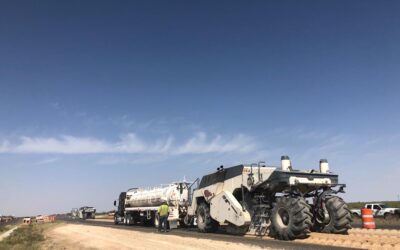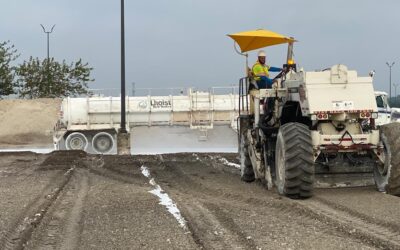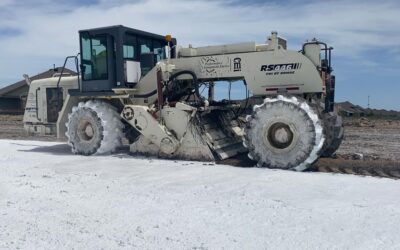Soil Stabilization
Eliminate costly soil corrections by modifying existing materials with the soil stabilization process
Lower your construction greenhouse gas (GHG) emissions by modifying existing soils on project sites
Accelerate construction schedules by eliminating lost days due to rain events
Reset design process and reduce the thickness of costly concrete and asphalt pavements
What Is Soil Stabilization?
Soil stabilization is the most efficient and cost-effective way to build on project sites with marginal soil types. This engineered process allows a contractor to modify existing soils by blending additives with the soil. These additives can be dry (cement, lime, fly ash) or wet (asphalt, emulsion, BASE ONE, calcium chloride). The SurfaceCycle family of companies has extensive experience working with a wide array of soil types and stabilization additives (over 50 to date).
The end result of the soil stabilization process is an engineered pavement layer with a design life of 30 plus years of service. Our companies’ fleets of late model soil stabilization equipment has been specifically designed to accurately distribute and incorporate additive materials. This precision, along with our team of skilled tradespeople, allows us to provide reliable and repeatable soil stabilization results throughout the US.
Want to learn more? Reach out to a SurfaceCycle company for more information, a quote, or to get on our schedule today!
Soil modification is a specialized, but growing, sub-segment of soil stabilization. Accelerated construction schedules have created a need to dry down job sites and eliminate lost construction days due to overly saturated soils. The end goal of the modification process is different than stabilization. A stabilized layer is an engineered system that is incorporated to the overall pavement design. Modified layers do not increase the strength or durability of soil. Modification of soils is performed to control moisture levels and maintain and/or accelerate construction schedules.





